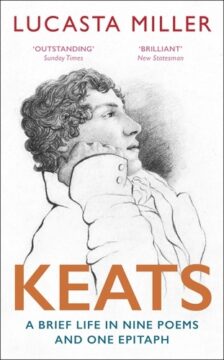Susan Eilenberg in The London Review of Books:
 Looking back to September 1820, when things had gone badly wrong but not yet so grotesquely as to be visibly beyond repair, we can see how few and how poor Keats’s options were. Surely it was better that (in the absence of other volunteers) the young artist Joseph Severn agreed to travel with the dying poet to Rome that autumn than that he had refused. When we rerun the history in our minds, wishing to find a way to make it all happen differently, it is hard to know whether, for the sake of Keats and his literary afterlife, to keep Severn at his side during these last months or magically to erase him. Severn was affectionate; he was foolish; and the foolishness made the affection a little embarrassing and eventually damaging to them both. But to have someone familiar there to hold you up and soothe you as you drowned in your own dark blood, choking on the ‘clay-like expectoration’ from your dissolving lungs – this must be preferable to drowning and choking alone. The reader’s urge to rerun the story in order to repair the intolerable injustice may be embarrassing and damaging too.
Looking back to September 1820, when things had gone badly wrong but not yet so grotesquely as to be visibly beyond repair, we can see how few and how poor Keats’s options were. Surely it was better that (in the absence of other volunteers) the young artist Joseph Severn agreed to travel with the dying poet to Rome that autumn than that he had refused. When we rerun the history in our minds, wishing to find a way to make it all happen differently, it is hard to know whether, for the sake of Keats and his literary afterlife, to keep Severn at his side during these last months or magically to erase him. Severn was affectionate; he was foolish; and the foolishness made the affection a little embarrassing and eventually damaging to them both. But to have someone familiar there to hold you up and soothe you as you drowned in your own dark blood, choking on the ‘clay-like expectoration’ from your dissolving lungs – this must be preferable to drowning and choking alone. The reader’s urge to rerun the story in order to repair the intolerable injustice may be embarrassing and damaging too.
Racing ahead of other threats – including syphilis, the mercury that Keats had prescribed himself to treat the syphilis, and the extreme anxiety caused by the mercury – tuberculosis was destroying Keats.
More here.
